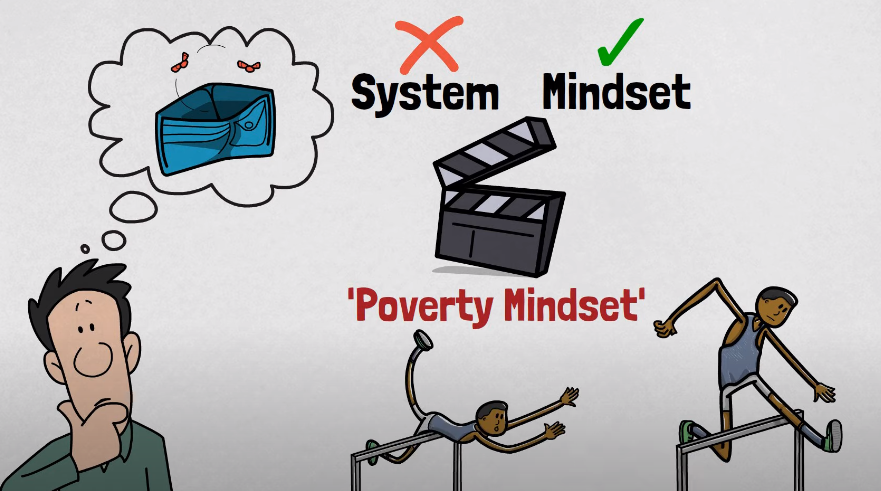Introduction to the Topic
Ever found yourself daydreaming about a life where money isn’t a constant worry and financial stability isn’t just a distant dream but a reality?
With the right knowledge, tools, and mindset, you too can navigate the journey from zero to financial mastery.
That’s right, welcome to our channel! Today, we’re going on a journey—a journey that will transform your relationship with money and set you on the path to long-term wealth.
Understanding Finance

You might find it challenging to navigate, communicate, and make decisions.
The world of finance is similar. If you don’t understand the language of money, it can be tough to navigate the financial world, make informed decisions, and ultimately build wealth.
That’s why understanding finance is so crucial. Finance, in its simplest terms, is the management of money, but it’s much more than just dollars and cents. It’s a system, a set of tools, and, most importantly, it’s a mindset.
Did you know that the concept of a stock exchange isn’t as modern as you might think? The Amsterdam Stock Exchange, now part of Euronext, was the first to list shares way back in 1602. The pioneer stock was the Dutch East India Company.
There are a few concepts to understand in finance. First up, financial markets. These are the places where buyers and sellers come together to trade financial assets like stocks and bonds.
Understanding how these markets work and how different factors can affect the value of your investments is a crucial part of building wealth.
Second, economic indicators. These are snapshots of the economy’s health, including everything from employment data to interest rates to GDP. These indicators can affect everything from the overall economy to the financial markets to your personal finances.
Lastly, there are financial institutions. These are the entities that facilitate our financial transactions: banks, credit unions, insurance companies, and brokerage firms. All of these are financial institutions that play a role in our financial lives.
Financial Planning

Now that we’ve got a grasp on finance, you might be wondering how to put this knowledge into action.
Enter financial planning. It’s the map of your path to long-term wealth. The first step in financial planning is to define what you want to achieve.
These goals could be short-term, like saving for a vacation; medium-term, like buying a house; or long-term, like planning for retirement. The key is to be specific, measurable, achievable, relevant, and time-bound—what we call SMART goals.
Once you have your goals, you need to take a hard look at your current financial situation. This involves calculating your net worth (what you own minus what you owe) and analyzing your income and expenses.
Then, create a budget, which will help you allocate your income towards your needs, wants, and savings or investment goals.
Speaking of goals, did you know that Bill Gates predicted his millionaire status while still at Harvard?
He told his professors he’d be a millionaire by 30, but he went one better and became a billionaire at 31.
Now that we’ve laid out our financial goals and have a plan in place, how do we start accumulating wealth? Well, this is where the most crucial steps are.
Saving and investing

Saving and investing go hand in hand on the journey to financial well-being. Understanding the importance of these concepts is crucial for building a secure future.
Saving
Saving is the first step in securing your financial future.
It’s a disciplined approach that requires making sacrifices and understanding the value of money. The 50/30/20 rule (50% necessities, 30% wants, and 20% savings) is a helpful guideline for effective budgeting. Saving is not just about accumulating money; it’s about preparing for future benefits.
Investing
Once you’ve built a sufficient savings cushion, the next step is investing. Investing is akin to planting the seeds you’ve saved, aiming to make your money work for you.
Various investment vehicles, such as stocks, bonds, or real estate, offer the potential for income generation and value appreciation over time.
The goal of investing is to grow wealth and secure long-term financial stability.
The power of compounding
Reinvesting earnings leads to exponential growth, showcasing the power of compounding.
Understanding this principle is essential for maximizing the returns on your investments.
Risk Management

Embarking on the journey of saving and investing introduces inherent risks. Effectively managing these risks is crucial for long-term financial success.
Understanding Risk
Risk is an integral part of investing, stemming from various sources such as market volatility, inflation, interest rates, and geopolitical events.
Acknowledging and understanding these risks is the first step in managing them effectively.
Risk Tolerance
Individuals have varying levels of comfort with risk. Identifying your risk tolerance is crucial to shaping your investment strategy.
Some are risk-takers, while others prefer a more risk-averse approach.
Diversification
Diversification is a powerful risk management tool. By spreading investments across different assets, the impact of poor performance in one area can be mitigated. Regularly reviewing and rebalancing your investment portfolio ensures it aligns with your desired risk and return levels.
Insurance as a Risk Management Tool
Insurance is a financial tool that can be instrumental in managing certain risks. By paying a premium, you can transfer the risk of financial loss to an insurance company.
This is particularly useful for risks with significant potential impacts, such as illness or property damage.
Emergency Fund
Creating an emergency fund is a practical strategy for unexpected financial challenges. This fund, equivalent to 3 to 6 months’ worth of living expenses, provides a safety net for unforeseen events, reducing financial stress.
In conclusion, by comprehensively understanding saving, investing, and implementing effective risk management strategies, you can navigate the uncertainties of the financial world and stay on course towards long-term wealth.




